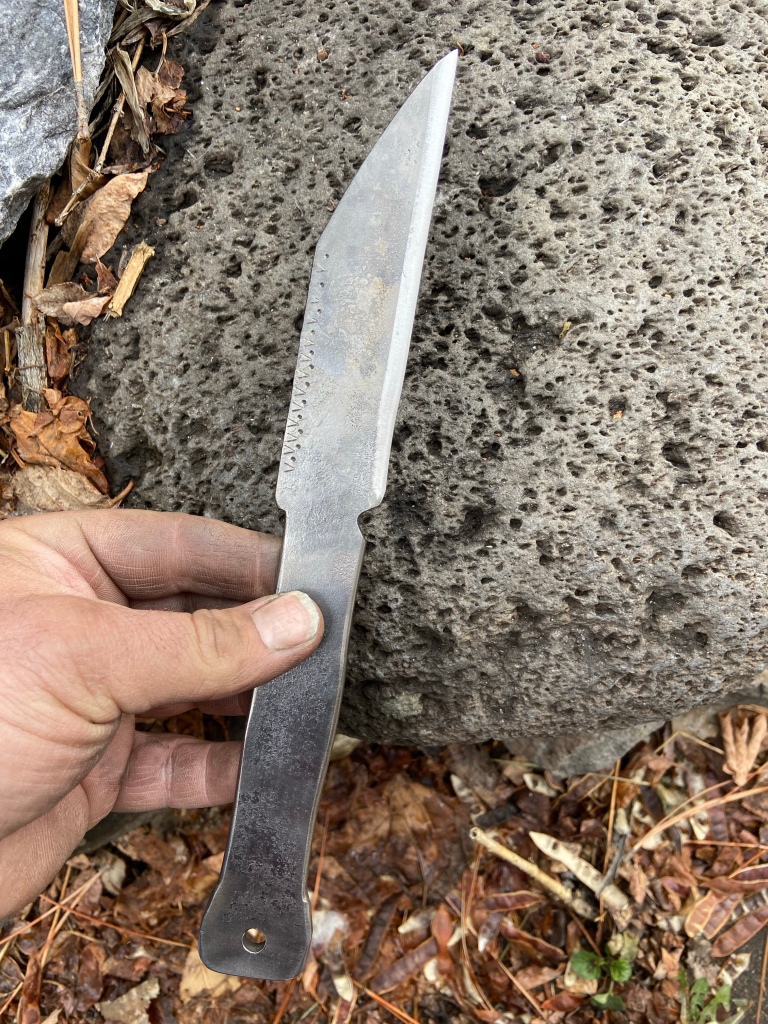Summer Selections! lots of made to order designs ready to go!
I have the largest selection of made to order items yet and tons of in stock items! Please check out my Ebay and Etsy.com for the new items including some items on Ebay not available on Etsy.
http://myworld.ebay.com/bertoviking
https://www.etsy.com/shop/NorseWest
1018 The how and why of the most commonly found steel. MODERN IRON
This material seems to receive the most interest and curiosity of any metal for up start Blacksmiths/Knife makers and for a very good reason! It’s cheap and really easy to get at any hardware store or scrap pile. I have basically explained how and when to use this material for blades (In my opinion) but I decided to get a bit deeper into the actual details with a post solely about this material.
Modern Iron-The Tech:
In ancient times iron weapons were very low carbon forged “Coal Iron” blades that were hammer hardened instead of quenching. These blade had enough carbon to quench but the technique of hammer hardening was still popular from the bronze age materials. Essentially 1018 is the modern equal to this primitive iron in many ways. The carbon content is a reliable 0.18% and reacts to ancient iron techniques in a positive way but in reality is far superior to its ancient ancestor. It is durable, does not crack while forging, welds easily, hardens by water quenching, is easy to mill and does not require tempering.
So the big question is can I make a knife from it?:
YES AND NO:
Yes you can make an prmitive iron knife from 1018 that is stronger, sharper and holds a better edge than a alot of bronze age knives. Yes You could even make a formidable primitive sword that would do great damage and be dangerous but the edge retention would be very low and bending during battle plagues longer pieces like a sword blade then and now.
No you cannot make a modern utility knife from 1018 as the edge retention is too low.
The problem with 1018 as a blade steel is that the carbon content will cause it to harden but it in thin pieces can only achieve 42RC. The average knife is 52RC or higher. When forging a flat piece you may achieve higher carbon through the process of case hardening as the steel absorbs more carbon as it heats at high temperature but using this technique is only so successful. After quenching 1018 it will harden and be tough to bend and grind in your shop, the durability is extremely high which is a net positive in most uses.
So this the data available from me regarding this type if steel but I say use it for Athame and ceremonial pieces because it, in its own right has good features with durability and ease of forging for decorative and symbolic work. Iron is in fact a sacred metal in Norse culture and believed to ward off evil.
Hope this helps better explain 1018 because I know how it’s availability makes it very tempting to the beginning Smith.
GALLERY:
The above gallery are all 1018 creations and were very enjoyable to make. The French nail is actually historically accurate because French soldiers often fashioned them from mild steel L bolts.
H-
Knives And Jewelry Gallery 2012
Jewelry and Athame in 2012.
HC Rebar 40 Grade. Polish/natural finish.

Mjollnir Amulet. Upcycled steel with SP ring.
HC Railroad Spike Knife
Norse Serpent
Forged Mjollnir With Loop.
Coin Silver Mjollnir with Solid 925 Ring.
These are just a few of the items being produced in my fire between late 2011-2012. Hope you enjoyed the gallry.
H-
Norse West Shop. Tons of New items!
March Antler Hunts Mini Post(Gallery)
Recently dropped mule deer antlers. The pair at the top is a set, a rare find for shed antler.
I love this time of year as it keeps the hunter-gather spirit in me alive and well.
Happy hunting! and for anyone just reading my blog these are naturally shed antlers and no harm has been done to any deer.
The deer naturally shed them for several years as they mature.

H-
My Shop
http://www.etsy.com/shop/NorseWest
Check out my shop for some very unique Jewelry and wrought iron pieces.
H-


















